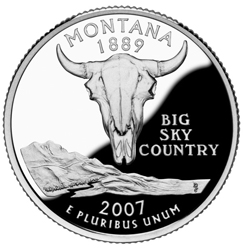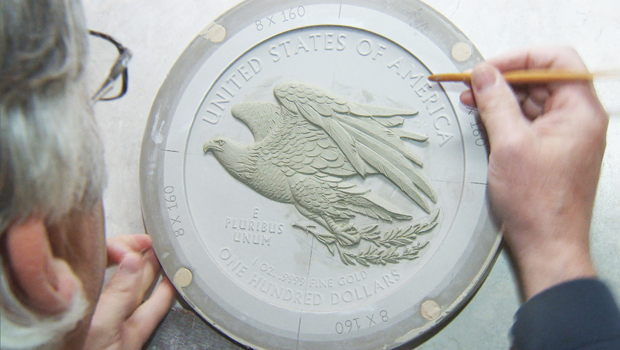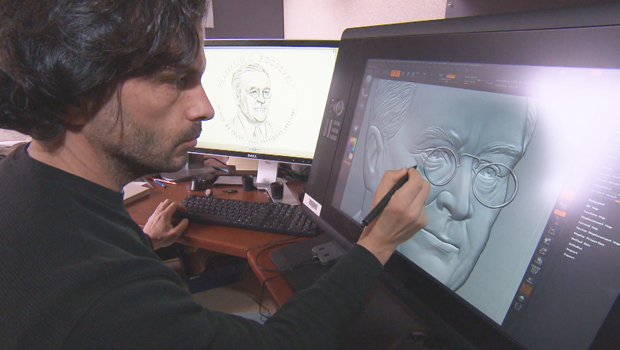Moneymakers: Artists at the U.S. Mint
The U.S. Mint has been honoring our nation's first spouses -- the latest to get a commemorative gold coin is Mamie Eisenhower. From stamping medals to making money, Mint designers are hard at work thinking small, as Anna Werner now shows us. (This story was originally broadcast on April 12, 2015.)
In this past-paced world obsessed with earning money, and spending it, it's understandable why you might not take a minute to examine your spare change. But if you did, you might find those coins are miniature works of art.
Donald Everhart, lead sculptor for the U.S. Mint in Philadelphia, says people are fascinated by how money is made. "Once they realize that it's not just, you know, press some buttons on a computer and out pops a coin -- there's a whole process to it."
"There's art in money,' said Werner. "There's not, maybe, money in art, but there's art in money."
"That's a good comment, I like that!" Everhart laughed.
Everhart's designs range from the state quarters we use every day, to medals presented to world leaders.
It's a unique job -- there are only seven sculptor-engravers in the country, and they all work out of the same Philadelphia office.
"How many designs do you think you've come up with?" asked Werner.
"It's gotta be in the thousands, literally," he replied.
Most coin designers use computers, but not Everhart. For him, each design starts with a lump of clay.
And you can't argue with his results, creating images with depths of as little as 70 or 80 thousandths of an inch.
He isn't the only one throwing in his two cents when it comes to his creations. Before designs are approved, they go through TWO federal committees.
"We don't have to abide by what they say, but we take what their recommendations are very seriously," he said.
"How much artistic freedom do you have in terms of designing the coins?" asked Werner.
"Surprisingly, a lot. Because the committees like to see new refreshing angles. We've done so many different things on coins that they want to see something that's indicative of the time we live."
All the way back in 1792, our founding fathers knew their new democracy couldn't truly be independent without its own currency, and so the Mint was born: the first federal building erected under the new constitution.
The Mint has perfected its practice since then. One machine uses lasers to trace Everhart's sculptures. It notes every nook and cranny, so it can shrink the image down to scale.
Next, they make a stamp. Using anywhere between 40 and 60 tons of force, that stamp strikes blank pieces of medal, making coins.
The U.S. Mint turns out $2.7 million in coins every day. And thousands of them could be Don Everhart's designs, which could be a pretty heavy thought for a unique artist.
Werner asked, "How do you wrap your head around the fact that millions of people have seen your work?"
"Well, millions of people have seen it, but I don't think they know who Don Everhart is. Even if they look at the little tiny initials on it. On every coin or medal that I've done since I've been here, I put initials on. Look for a little DE, usually in the lower right-hand corner."
And then we'll know, "Hey, Don did that coin."
For more info:



